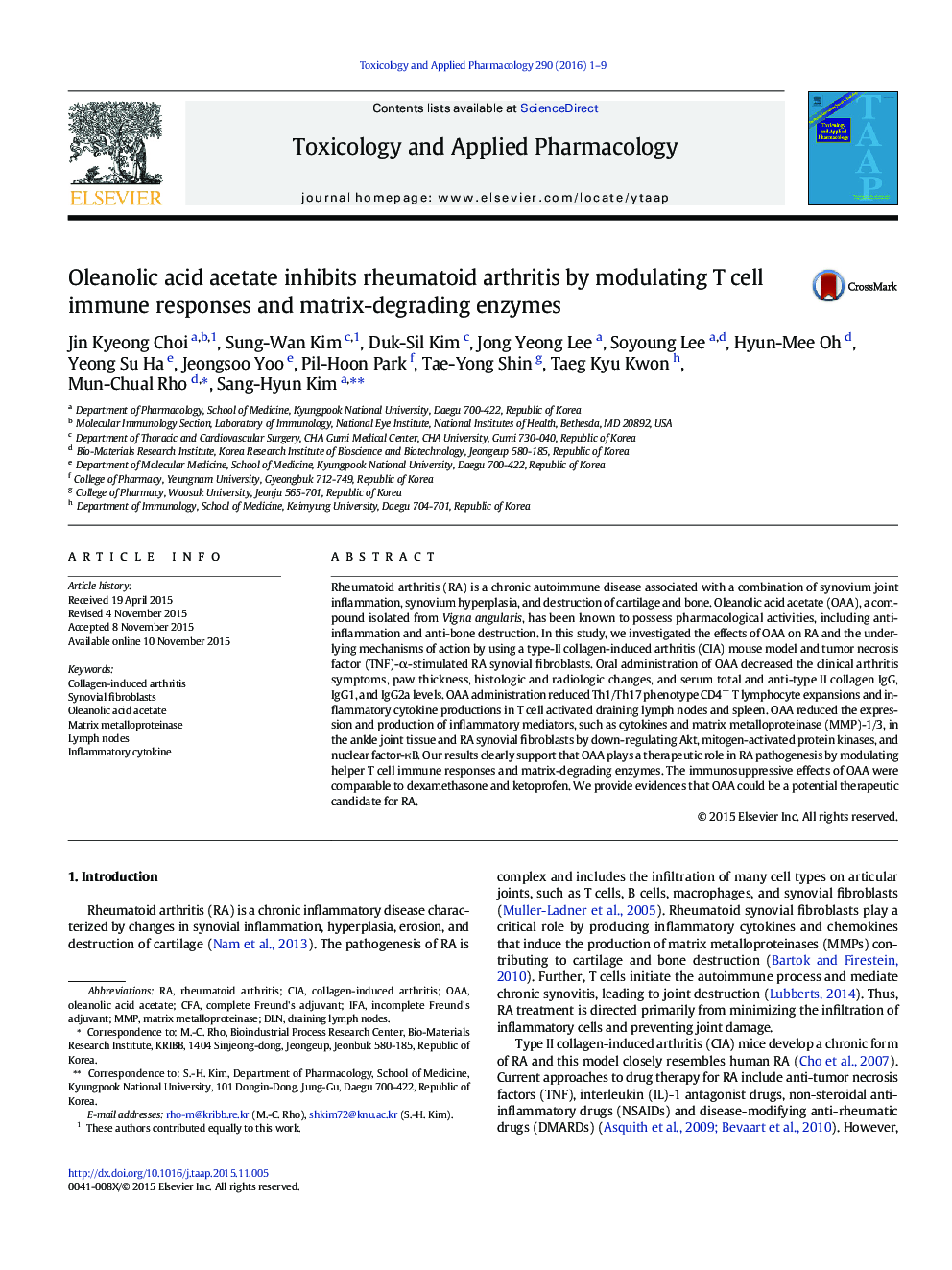| Article ID | Journal | Published Year | Pages | File Type |
|---|---|---|---|---|
| 5845888 | Toxicology and Applied Pharmacology | 2016 | 9 Pages |
â¢OAA attenuated chronic CIA symptoms.â¢OAA had a regulating effect on the T helper cell immune reaction for CIA.â¢The effect of OAA on the RA was comparable to the dexamethasone or ketoprofen.â¢OAA might be a candidate for the treatment of arthritic diseases.
ABSTRACTRheumatoid arthritis (RA) is a chronic autoimmune disease associated with a combination of synovium joint inflammation, synovium hyperplasia, and destruction of cartilage and bone. Oleanolic acid acetate (OAA), a compound isolated from Vigna angularis, has been known to possess pharmacological activities, including anti-inflammation and anti-bone destruction. In this study, we investigated the effects of OAA on RA and the underlying mechanisms of action by using a type-II collagen-induced arthritis (CIA) mouse model and tumor necrosis factor (TNF)-α-stimulated RA synovial fibroblasts. Oral administration of OAA decreased the clinical arthritis symptoms, paw thickness, histologic and radiologic changes, and serum total and anti-type II collagen IgG, IgG1, and IgG2a levels. OAA administration reduced Th1/Th17 phenotype CD4+ T lymphocyte expansions and inflammatory cytokine productions in T cell activated draining lymph nodes and spleen. OAA reduced the expression and production of inflammatory mediators, such as cytokines and matrix metalloproteinase (MMP)-1/3, in the ankle joint tissue and RA synovial fibroblasts by down-regulating Akt, mitogen-activated protein kinases, and nuclear factor-κB. Our results clearly support that OAA plays a therapeutic role in RA pathogenesis by modulating helper T cell immune responses and matrix-degrading enzymes. The immunosuppressive effects of OAA were comparable to dexamethasone and ketoprofen. We provide evidences that OAA could be a potential therapeutic candidate for RA.
Graphical abstractDownload high-res image (112KB)Download full-size image
